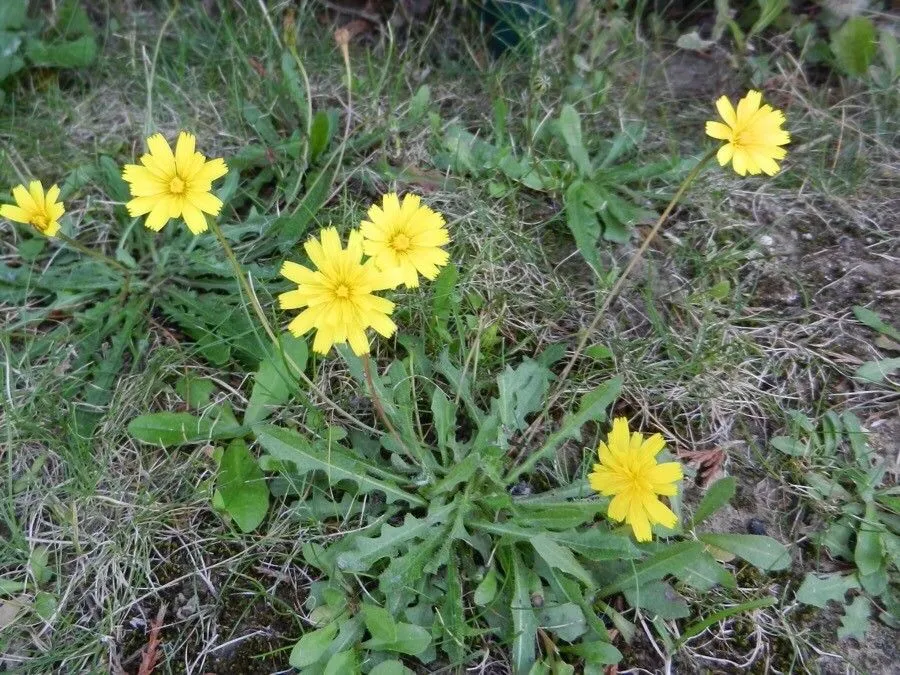
Author: Lam.
Bibliography: Fl. Franç. 2: 115. (1779)
Year: 1779
Status: accepted
Rank: species
Genus: Leontodon
Vegetable: Unknown
Observations: Azores, Europe, Morocco
The Hairy hawkbit, known scientifically as Leontodon saxatilis, is a distinguished member of the Asteraceae family. Its introduction into botanical literature can be traced back to the seminal work “Flore Françoise,” published in 1779 by the renowned author Lam. This plant features prominently in a variety of natural habitats, including the Azores, Europe, and Morocco.
Hairy hawkbit is easily recognized by its distinctive hairy foliage and bright, dandelion-like flowers that lend a splash of yellow to the landscapes it inhabits. These resilient plants thrive in a range of environments – from the rugged terrains of Morocco to the temperate climates of Europe and the unique ecosystems of the Azores islands.
Botanists and plant enthusiasts value Leontodon saxatilis for its ecological adaptability and its role in local flora. As a member of the Asteraceae family, it shares relationships with other notable species, contributing to the biodiversity and ecological balance in its native regions. This plant not only enhances the aesthetic appeal of its surroundings but also supports various pollinators, making it an integral part of natural and cultivated landscapes.
In summary, the Hairy hawkbit, or Leontodon saxatilis, stands out as a resilient, adaptable plant with significant ecological value. Its presence, spanning from the Azores to Europe and Morocco, underscores its versatility and importance within the Asteraceae family and the natural world at large.
En: Hairy hawkbit, Lesser hawkbit, Rough hawkbit, Hawkbit
Sq: Dhëmbëluan luleshurdhengjashëm
Ca: Morro de porcell
Cs: Máchelka pampeliškovitá, Pupavík pampeliškový
Da: Hundesalat, Kølle-Valmue, Sibirisk Valmue
Nl: Kleine leeuwentand, Kleine Leeuwetand
Fi: Juovamaitiainen, Hietaunikko, Siperianunikko
Fr: Liondent des rochers, Liondent faux Pissenlit, Léontodon des rochers, Léontodon faux Pissenlit, Léontodon hérissé, Thrincie, Thrincie hérissée, Liondent faux-pissenlit
De: Hundslattich, Nickender Löwenzahn, Zinnensaat, Zinnensalat
Is: Garðasól
It: Dente di leone delle rupi, Dente di leone di Leysser, Dente-di-leone delle rupi
Ja: Tanpopo-modoki
No: Klubbevallmue, Sibirvalmue, Stripefølblom
Pl: Brodawnik różnoowockowy
Sv: Strimfibbla, Engelsk vallmo, Löjtnantshjärta, Sibirisk vallmo, Spikvallmo
Cy: Peradl Blewog, Peradl Lleiaf Blewog, Peradyl Bach, Peradyl Blewog, Peradyl Lleiaf
© copyright of the Board of Trustees of the Royal Botanic Gardens, Kew.
Taken Jun 22, 2016 by Tela Botanica − Liliane ROUBAUDI (cc-by-sa)
Taken Jun 22, 2016 by Tela Botanica − Liliane ROUBAUDI (cc-by-sa)
Taken Jun 19, 2016 by Tela Botanica − Liliane ROUBAUDI (cc-by-sa)
Taken Jan 10, 2022 by Sergio costantini (cc-by-sa)
Taken Sep 19, 2022 by David Hocken (cc-by-sa)
Taken Jan 10, 2022 by Sergio costantini (cc-by-sa)
Taken Sep 19, 2022 by David Hocken (cc-by-sa)
Taken Sep 19, 2022 by David Hocken (cc-by-sa)
Taken Sep 17, 2022 by David Hocken (cc-by-sa)
Taken May 2, 2019 by Rabah Kherfallah (cc-by-sa)
Taken Jun 19, 2016 by Tela Botanica − Liliane ROUBAUDI (cc-by-sa)
Taken Mar 1, 2020 by mentor mentor (cc-by-sa)
Taken Apr 27, 2022 by Myriam Debergue (cc-by-sa)
Taken Sep 19, 2022 by David Hocken (cc-by-sa)
Taken Jan 31, 2021 by yvette Dupanloup (cc-by-sa)
Taken Nov 9, 2011 by Tela Botanica − Bertrand BUI (cc-by-sa)
Taken Jan 1, 1970 by Photoflora – L’Abbé COSTE (©)
Taken Aug 15, 2015 by Photoflora – Benoit BOCK (©)
Taken Nov 9, 2011 by Tela Botanica − Bertrand BUI (cc-by-sa)
Taken Jan 10, 2022 by Sergio costantini (cc-by-sa)
Taken Oct 11, 2011 by Martin Bishop (cc-by-sa)
Taken Sep 5, 2021 by Pierre LEON (cc-by-sa)
Taken May 30, 2019 by Tela Botanica − Sylvain Piry (cc-by-sa)
Family: Myrtaceae Author: (F.Muell.) K.D.Hill & L.A.S.Johnson Bibliography: Telopea 6: 402 (1995) Year: 1995 Status:…
Family: Rubiaceae Author: Pierre ex A.Froehner Bibliography: Notizbl. Bot. Gart. Berlin-Dahlem 1: 237 (1897) Year:…
Family: Sapindaceae Author: Koidz. Bibliography: J. Coll. Sci. Imp. Univ. Tokyo 32(1): 38 (1911) Year:…
Family: Asteraceae Author: A.Gray Bibliography: Pacif. Railr. Rep.: 107 (1857) Year: 1857 Status: accepted Rank:…
Family: Fabaceae Author: Medik. Bibliography: Vorles. Churpfälz. Phys.-Ökon. Ges. 2: 398 (1787) Year: 1787 Status:…
Family: Aspleniaceae Author: (Cav.) Alston Bibliography: Bull. Misc. Inform. Kew 1932: 309 (1932) Year: 1932…